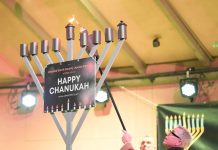July 28 used to be one of my favorite days of the year. On the Roman Catholic calendar, it is the feast day of a minor saint, Pope Saint Victor I, who was martyred by the Romans around the year 199 AD. Pope Victor was known for being the first pope of African origin, for changing the language of the Mass in Rome from Greek to Latin, a practice that continued for over 1,700 years, and for standardizing the celebration of Easter on Sunday, rather than celebrating it on different days of the week as is done for the Jewish Passover.

My first pastorate was St. Victor Parish in the Berryessa neighborhood of San Jose. Parishioners celebrated the day with a late-afternoon outside Mass followed by a barbecue, music for the adults and games for the children—a custom that happily continues to this day.
It gave the parishioners a chance to worship God in a unique way and enjoy each other’s company with a wholesome “block party” feel.
Not long after I was assigned to St. Mary Parish in Gilroy, July 28, 2019, became the worst day in our city’s history. The senseless murders of Stephen Romero, Keyla Salazar and Trevor Irby and the many more wounded and traumatized during our city’s greatest community event caused repercussions that exist even to the present day.
At the morning Mass on July 28 this year and probably every year for the foreseeable future, St. Mary parishioners prayed for the three deceased victims. Praying for the dead is a practice shared by the majority of the world’s Christians, although it is a minority practice within Christians in the United States.
The various Christian traditions that have this practice—Catholics, Orthodox, Coptics, Antiochean and others—do so for a number of theological reasons. Without getting into the theological nuances between the traditions, I think the opening words from the Roman Catholic Vigil Service provide a good summary: “My brother and sisters, we believe that all the ties of friendship and affection which knit us as one throughout our lives do not unravel with death.”
By praying for the dead, we assist them, just as our prayers for those alive on the Earth are efficacious.
Praying to our God for the dead is part of our Christian witness that Jesus’ resurrection put an end to the false belief that death has the last word in every human being’s story. To us, death is a transition, not the end. As mutual love inspires us to pray for each other in this life, so does it call upon us to pray for our loved ones in the life beyond.
Yearly memorials and participating in “Celebration of Life” gatherings are commendable means to not forget the good people in our lives who have died and honor their accomplishments, but praying for them is a powerful means to express our continuing love.
Rev. Michael Hendrickson is the Pastor of St. Mary Parish in Gilroy. He is a 1986 graduate of Live Oak High School, served as a naval chaplain for eight years and as a priest for 21 years. Father Hendrickson is an active participant in the Interfaith Clergy Alliance of South County. He can be contacted at mi*******************@*sj.org.















